Best Wax Fabric: High-Quality Prints for Every Occasion
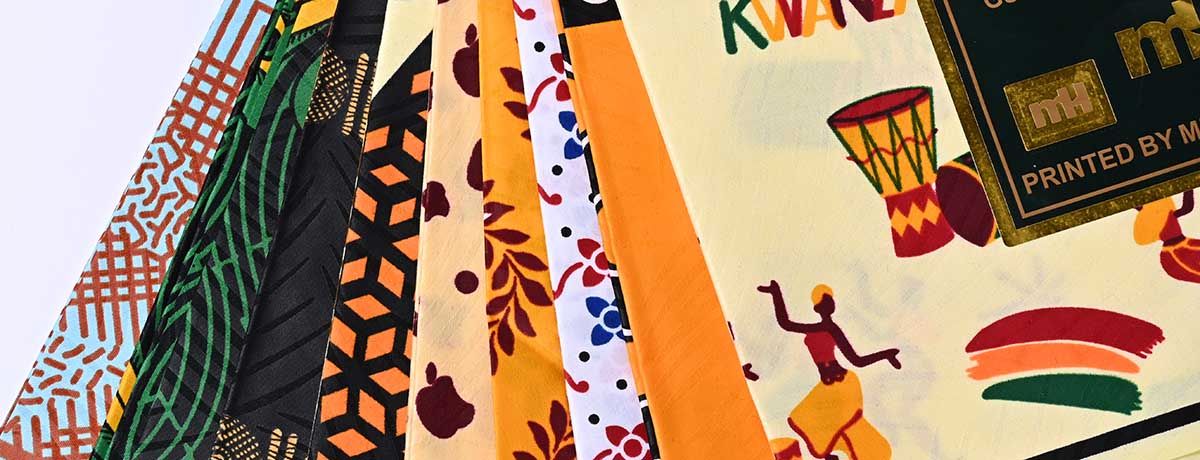
Wax fabric, famous for its vivid and intricate designs, is a cotton textile deeply rooted in African culture. This article delves into its unique production methods, leading manufacturers, cultural importance, and practical uses.
Key Takeaways
-
The production of wax fabric blends traditional techniques, particularly Prévinaire’s method, with modern innovations such as digital and rotary screen printing, ensuring the quality and vibrancy of the prints.
-
Leading manufacturers, such as Vlisco and local African brands, play a crucial role in the wax fabric market by intertwining cultural heritage with quality craftsmanship to meet diverse consumer demands.
-
Wax fabric serves as a significant cultural symbol in West Africa, influencing traditional ceremonies and modern fashion trends, and is recognized for its adaptability across various applications including clothing and home decor.
The Art of Wax Fabric Production
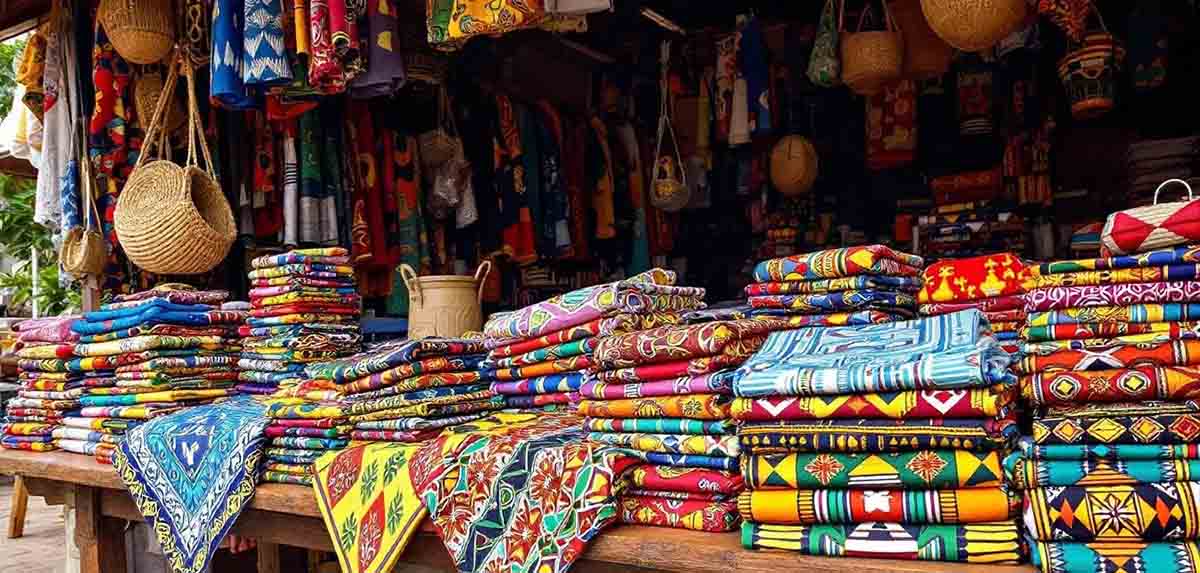
The magic of African wax prints begins with a meticulous and time-honored production process. This craft, influenced by Indonesian batik techniques, involves multiple steps of dye application to achieve the intricate designs and vibrant colors that make these fabrics so unique. The artistry lies in the careful selection of high-quality cotton and the detailed manufacturing process that ensures the fabric’s durability and appeal.
The production of wax fabric is an art form that has evolved over the centuries, blending traditional methods with modern innovations. The historical Prévinaire’s method laid the foundation for this craft, while contemporary techniques have further enhanced the richness and quality of wax prints and work.
Understanding these methods offers a glimpse into the dedication and skill required to produce such exquisite fabrics. Let’s dive deeper into the historical Prévinaire’s method and the modern techniques that have revolutionized wax fabric production.
Prévinaire's Method
Initially developed as an adaptation of traditional techniques, the Prévinaire’s method has been perfected over time to create high-quality wax fabrics. This method involves applying resin to both sides of the fabric, which is crucial for creating the bold and vibrant colors that wax prints are known for. The dyeing process then immerses the fabric in dyes resistant to fading, ensuring long-lasting colors that maintain their beauty over time.
Preserving these traditional techniques is not just about honoring cultural heritage; it also guarantees the production of high-quality fabrics. The meticulous process and attention to detail in the Prévinaire’s method highlight the craftsmanship that goes into every piece of wax fabric.
Modern Techniques
Today, the art of wax fabric production has embraced contemporary printing methods that enhance the fabric’s color richness and mimic traditional techniques. Digital printing and rotary screen-printing have emerged as key methods, allowing for more detailed and vibrant designs to be applied to the fabric. These techniques not only replicate the look of traditional wax prints but also bring out the colors more vividly, ensuring the fabric’s visual appeal.
The modern process involves applying the designs digitally or through rotary screens, which builds on the traditional methods but offers greater precision and efficiency. This blend of old and new techniques continues to make wax fabric a beloved material in the fashion world, celebrated for its perfect balance of tradition and innovation.
Leading Manufacturers of Wax Fabric
In the landscape of wax fabric production, certain manufacturers have distinguished themselves through their commitment to quality and innovation. The Vlisco Group, for instance, has become a key player, blending Dutch manufacturing techniques with African cultural elements to create iconic wax prints. Their dedication to maintaining high standards has set them apart in the market.
On the other hand, local African manufacturers have also made significant strides, particularly after the 1960s when import duties on foreign fabrics increased. This shift led to a rise in local production, with manufacturers like:
-
ABC Wax
-
Woodin
-
GTP gaining recognition for their quality and affordability. These companies have leveraged local resources and labor to produce wax prints that cater to regional tastes.
Let’s explore the heritage of Vlisco and the contributions of African manufacturers in more detail.
Vlisco's Heritage
Vlisco’s story began in 1927 when van Vlissingen’s company rebranded to Vlisco, marking a significant point in its legacy. Key milestones include:
-
The company was originally founded by Prévinaire.
-
In 1875, after a merger, it was renamed Haarlemsche Katoenmaatschappij, which was crucial for its development.
-
Prévinaire innovated by modifying a mechanical block-printing machine to apply resin on both sides of the fabric, showcasing Vlisco’s commitment to enhancing the wax print production process.
This dedication to innovation and quality has made Vlisco a household name in the wax fabric industry, known for its premium Wax Hollandais and other high-quality products. Their prints have not only captured the hearts of African consumers but have also made a significant impact on the global fashion scene.
African Manufacturers
The rise of local African manufacturers post-1960s marked a significant shift in the wax fabric industry. Companies like:
-
ABC Wax
-
Woodin
-
Uniwax
-
Akosombo Textiles Limited
-
GTP have leveraged local resources and labor to produce high-quality wax prints that cater to regional tastes. These manufacturers have gained recognition for their ability to produce affordable yet high-quality fabrics, making them popular choices in the market.
In countries like Nigeria and Ghana, these local manufacturers have become integral to the wax fabric industry, contributing to its growth and sustainability. Their products not only reflect the rich cultural heritage of West Africa but also provide consumers with a variety of choices in terms of design and price.
Cultural Significance of Wax Fabric in West Africa
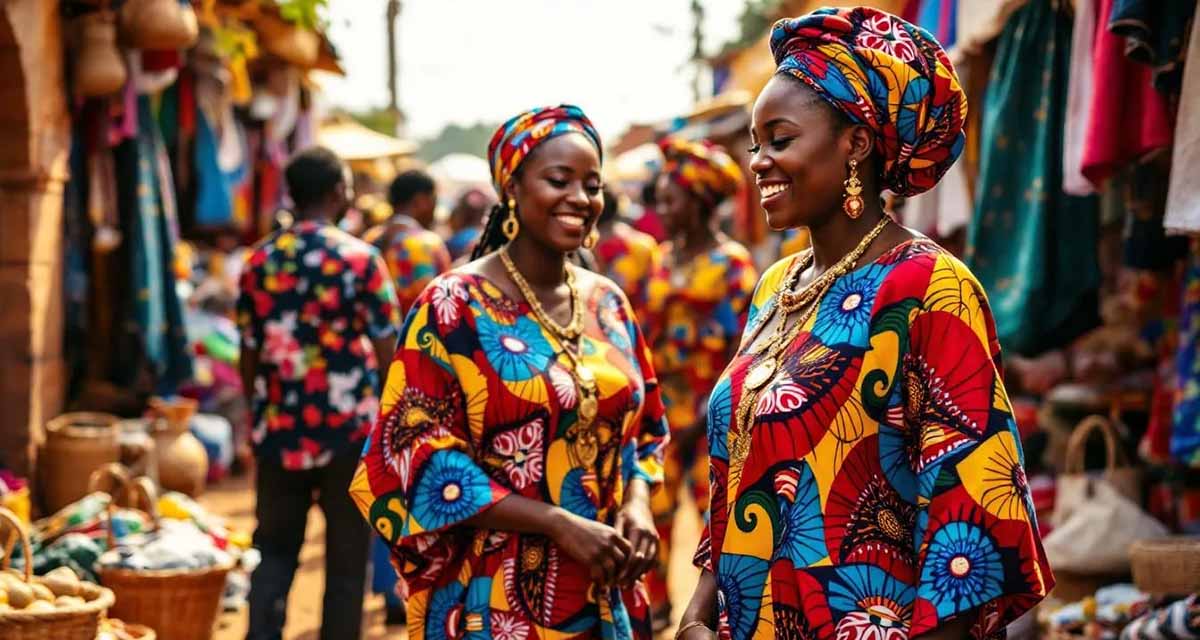
Wax fabric is more than just a material; it is a symbol of cultural identity and community in West Africa. From the vibrant Wax Hollandais to the intricate designs reflecting African culture, these fabrics have played a crucial role in the region’s social and cultural life. Vlisco’s influence, starting as a company focused on high-quality wax fabrics, has significantly impacted the textile industry in West Africa.
The authenticity of wax fabric is paramount, with genuine pieces often featuring unique patterns and vibrant colors that carry deep cultural significance. These fabrics are not only used in everyday attire but also play a vital role in traditional ceremonies and modern fashion trends, reflecting the dynamic and evolving nature of West African culture.
Let’s delve into the traditional uses and modern fashion trends of wax fabric in West Africa.
Traditional Uses
Wax fabric is deeply embedded in the traditional ceremonies and events of West African cultures. It is often used to convey messages and signify status through its vibrant patterns. During significant events like weddings and naming ceremonies, wax fabric plays a crucial role in the attire worn, symbolizing celebration and unity. The classic designs, such as Kente and Adinkra patterns, are celebrated for their cultural significance and intricate aesthetics.
The historical method of coloring wax fabric involves applying wax to protect certain areas of the fabric during the dyeing process, ensuring the colors remain vibrant and intact. This method has been passed down through generations, preserving the rich heritage and cultural meanings associated with these fabrics.
Modern Fashion Trends
In the realm of modern fashion, contemporary designers are increasingly blending traditional wax prints with modern silhouettes to create unique fashion statements. Wax fabric is commonly used to create diverse clothing items, such as:
-
dresses
-
jackets
-
skirts
-
head wraps showcasing its versatility and appeal. Accessories like scarves and bags further allow for the easy incorporation of bold prints into everyday outfits.
Current trends emphasize bold hues like fuchsia, emerald green, and mustard yellow, reflecting modern aesthetics. Earthy tones and pastel shades are also gaining popularity, demonstrating the dynamic nature of wax fabric in contemporary fashion.
Types of Wax Fabric
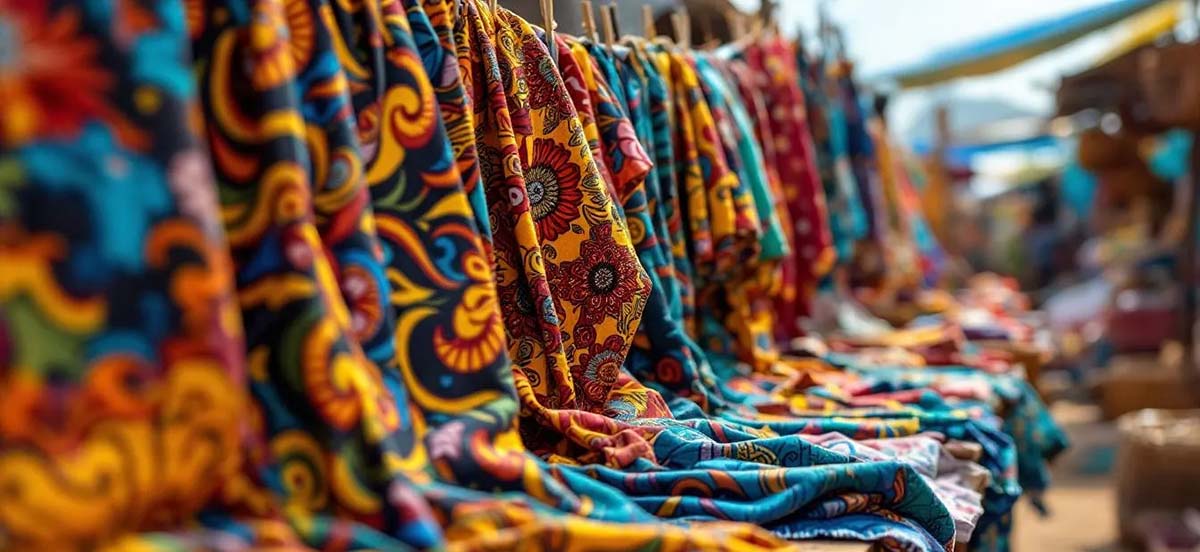
Wax fabric comes in various types, each with its unique characteristics and production methods. Wax Hollandais, known for its durability and premium quality, often features intricate and vibrant designs on one side of the fabric. On the other hand, African Fancy Prints, produced using digital printing technology, offer a versatile and cost-effective option compared to traditional methods.
The price of wax fabric can vary significantly based on its quality and the production process used, making it essential for consumers to understand the differences between these types.
Let’s explore Wax Hollandais and African Fancy Prints in more detail.
Wax Hollandais
Wax Hollandais is renowned for its premium quality and durability, often featuring intricate designs that are both vibrant and long-lasting. The fabric’s one-sided print design distinguishes it from traditional wax prints that often feature designs on both sides. This quality craftsmanship comes at a higher price, reflecting the superior materials and production methods used.
Originally, the company behind Wax Hollandais produced handkerchiefs and bedspreads before shifting focus to great wax print fabrics, showcasing its evolution and commitment to quality in this case, even in the heat of competition. The company decided to cut its previous offerings that were removed to concentrate on this new direction.
Today, Wax Hollandais remains a favorite among those seeking high-quality and durable wax prints from the Netherlands.
African Fancy Prints
African Fancy Prints are known for their vibrant colors and affordability, making them a popular choice in the market. These african fabrics are printed on one side and are richer in color compared to traditional wax prints. The use of digital methods and rotary screen-printing allows for more diverse and detailed designs, including print fabric.
While Fancy Prints may be cheaper imitations produced industrially, they offer an accessible option for those looking to incorporate bold and vibrant designs into their wardrobe or home decor. Their cost-effectiveness and aesthetic appeal make them a favored choice for many consumers.
Popular Designs and Colors in Wax Fabric
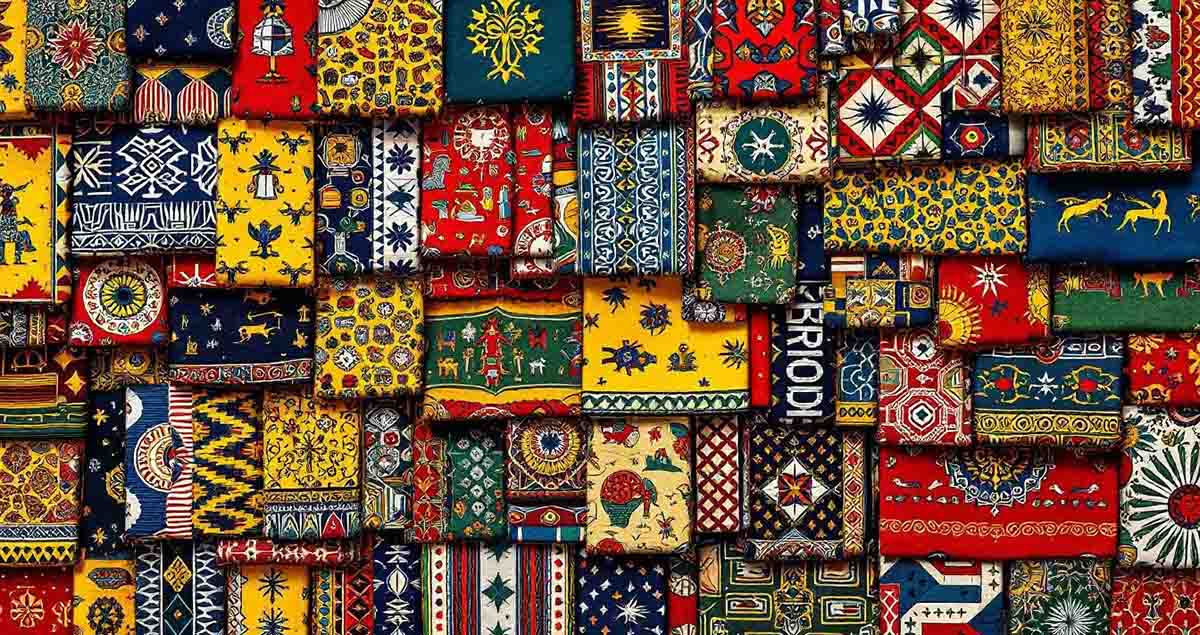
The world of wax fabric is a kaleidoscope of colors and designs, each with its unique charm and appeal. Bright colors like blue, orange, purple, and yellow are among the most sought-after in wax fabric designs. These vibrant hues not only enhance the fabric’s aesthetic appeal but also influence fashion statements among designers and consumers.
The color palette of African Fancy Prints can be more diverse and vibrant compared to traditional wax fabrics, reflecting modern aesthetics. Let’s explore some iconic patterns and trending colors in wax fabric.
Iconic Patterns
Some classic designs in wax fabric include floral motifs and intricate geometric shapes that have become staples in the fashion industry. Traditional motifs often feature geometric shapes, florals, and ornamental designs that reflect African heritage.
These patterns are not just visually appealing but also carry cultural symbols and means, making them iconic in the world of wax fabric in a fun way that resonates deeply with words.
Trending Colors
The wax fabric market is currently witnessing dynamic color trends that reflect modern aesthetics. Popular colors include:
-
Vibrant blue
-
Orange
-
Purple
-
Yellow These colors enhance the fabric’s overall appeal and make bold fashion statements. These hues are energetic and eye-catching, often seen in contemporary fashion designs.
In addition to these vibrant colors, earthy tones and pastel shades are also gaining popularity, offering a softer yet equally captivating alternative. These trending colors provide designers and consumers with a range of options to suit various tastes and styles, ensuring that wax fabric remains a versatile and fashionable choice.
Applications of Wax Fabric
Wax fabric’s versatility extends far beyond clothing; it is a symbol of cultural identity and expression in West Africa. Its use in various settings, from fashion to home decor, showcases its adaptability and aesthetic appeal. African wax prints are often transformed into diverse products, reflecting their market value and contributing to economic empowerment for women.
Let’s explore the specific applications of wax fabric in clothing and accessories, as well as home decor.
Clothing and Accessories
Wax fabric is utilized in creating a wide array of clothing items, including pants, jackets, and bags, showcasing its versatility and appeal. Contemporary designers have embraced wax fabric, integrating it into their modern clothing collections to reflect African heritage. This integration has led to unique styles that blend traditional aesthetics with modern fashion trends.
In addition to clothing, wax fabric is also used in various fashion applications, enhancing unique styles across the industry. Accessories such as:
-
scarves
-
head wraps
-
bags allow for the easy incorporation of bold prints into everyday outfits, making wax fabric a staple in both casual and formal wear.
Home Decor
In home decor, African wax fabric is employed in creating elements such as:
-
cushions
-
curtains
-
table coverings These add color and character to living spaces. These fabrics are popular for their vibrant patterns and cultural significance, making them a unique addition to any interior.
Wax fabric is also used for outdoor decor, such as garden cushions and tablecloths, creating a welcoming and festive atmosphere. Its versatility and aesthetic appeal make it a favorite choice for enhancing both indoor and outdoor spaces, reflecting the rich heritage and vibrant culture of West Africa.
Caring for Wax Fabric
Proper care is essential for maintaining the vibrant colors and longevity of wax fabric. Adhering to proper cleaning methods and storage tips helps keep your wax prints beautiful and durable for years.
Let’s explore the best practices for cleaning and storing wax fabric that has been cleaned to preserve its quality and appeal.
Cleaning Methods
To clean wax fabric, follow these recommendations:
-
Hand wash with mild soap and cold water to prevent fading and damage.
-
Avoid harsh detergents and bleach to preserve the integrity of the fabric.
-
If using a washing machine, opt for gentle cycles to prevent agitation that can peel or distort the wax layer.
Proper cleaning methods are essential to maintain the vibrant colors and integrity of the fabric. By following these guidelines, you can ensure that your wax fabric retains its beauty and durability.
Storage Tips
Tips for storing wax fabric:
-
Store in a cool, dry place to prevent mold and mildew growth, which can damage the fabric.
-
Use breathable fabric bags instead of plastic to help maintain the fabric’s vibrancy.
-
Fold the fabric neatly rather than hanging it to prevent stretching and distortion.
By following these storage tips, you can preserve the quality and appearance of your wax fabric, ensuring it remains a cherished part of your collection for years to come.
Buying Guide for Wax Fabric
When purchasing wax fabric, it is essential to focus on quality and affordability while considering reputable sources. African Fancy Prints are often more affordable than traditional wax prints due to their industrial production methods, offering a cost-effective option for consumers.
Understanding key factors and knowing where to buy wax fabric is crucial for making informed decisions that are needed.
Factors to Consider
Quality is a critical factor to consider when purchasing wax fabric, as it directly impacts the longevity and appearance of the product. Buying a sample of the fabric before making a larger purchase can help assess its design, color, and quality.
Considering the price and authenticity of wax fabric influences its overall value and your satisfaction with the purchase. Ultimately, prospective buyers should weigh quality, price, and authenticity to make informed decisions when selecting wax fabric.
This approach ensures that you invest in a product that meets your expectations and needs.
Where to Buy
Online stores that focus on African textiles often provide a wide variety of wax prints and detailed product descriptions, making them a convenient option for purchasing wax fabric. Local fabric stores may also carry wax prints, allowing customers to see and feel the fabric before purchasing.
Physical fabric shops in areas with a strong African community are another excellent source for authentic wax prints, offering the advantage of direct inspection. Exploring these sources helps you find high-quality wax fabric that suits your needs and preferences, ensuring a satisfying buying experience.
Summary
In summary, wax fabric is a vibrant and culturally significant material that has captivated people around the world. From its intricate production methods and leading manufacturers to its role in traditional ceremonies and modern fashion, wax fabric continues to be a symbol of heritage and creativity. Understanding the different types, popular designs and colors, and versatile applications of wax fabric allows you to appreciate its unique qualities and potential.
As you explore the world of wax fabric, remember the importance of proper care and informed purchasing decisions. By following the tips and guidelines provided in this guide, you can ensure that your wax fabric remains a cherished and beautiful part of your wardrobe and home decor. Embrace the rich heritage and vibrant colors of wax fabric, and let it inspire your creativity and style.
Frequently Asked Questions
What is the difference between Wax Hollandais and African Fancy Prints?
Wax Hollandais is distinguished by its premium quality, intricate one-sided designs, and durability. In contrast, African Fancy Prints utilize digital methods, providing vibrant colors and diverse, cost-effective designs.
How should I clean my wax fabric to ensure it lasts?
To ensure your wax fabric lasts, hand wash it with mild soap and cold water, avoiding harsh detergents and bleach. If machine washing is necessary, use a gentle cycle.
Where can I buy authentic wax fabric?
You can buy authentic wax fabric from online stores that specialize in African textiles, local fabric shops, and physical stores in areas with a significant African community, allowing you to explore a variety of options and inspect the fabric firsthand.
What are some popular designs and colors in wax fabric?
Popular designs in wax fabric feature floral motifs, geometric shapes, and cultural symbols that reflect African heritage, while trending colors include vibrant shades such as blue, orange, purple, and yellow, along with earthy and pastel tones.
How can I store my wax fabric to maintain its quality?
To maintain the quality of your wax fabric, store it in a cool, dry place away from direct sunlight and use breathable fabric bags for storage. Neatly fold the fabric instead of hanging it to prevent stretching and distortion.
Contact MH
MH offer wax fabrics, feel free to reach out to us for more details or inquiries. We're here to help!


